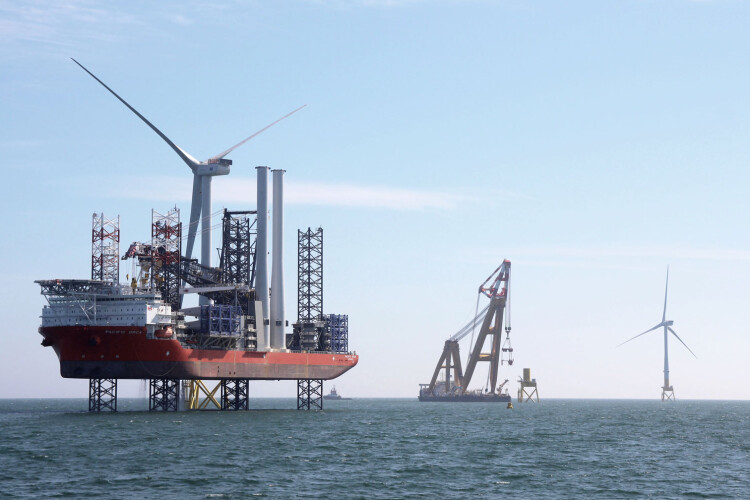The campaign to install the first turbines at the 3.6 GW Dogger Bank offshore wind farm has begun. Jan De Nul’s Voltaire jack-up vessel departed Able Seaton Port, carrying the initial batch of wind turbines to the construction site. The wind farm is located approximately 130 kilometres off the east coast of Yorkshire, UK.
The ambitious project is spearheaded by SSE Renewables in collaboration with Equinor and Vårgrønn. Thus, it will see the installation of 277 GE Haliade-X turbines across all three phases of the Dogger Bank Wind Farm. Jan De Nul secured a contract in 2020 to install turbines for phases A & B. Later, in the following year, the company also secured the same work for phase C.
Excitement surrounds the installation of the first 260-meter wind turbine, expected to commence during the weekend. The wind turbine components have been arriving at Able Seaton Port since January. This is where Mammoet UK is responsible for onshore heavy lifting and transport for staging and assembly. Additionally, Eastgate Engineering will handle the mechanical and electrical work for the pre-assembly of the towers and nacelles.
READ ALSO: Comprehensive Refurbishment Set in 2024 for London’s Blackwall Tunnel
Number of turbines at the 3.6 GW Dogger Bank offshore wind farm
The installation consists of 190 Haliade-X 13 MW turbines in phases A & B and 87 Haliade-X 14 MW turbines in phase C. The venture has significantly contributed to job creation, with over 2,000 jobs primarily in the North East of England.
Dogger Bank Wind Farm has already achieved several world-firsts, including the deployment of innovative 13 MW and 14 MW wind turbine technology, the world’s first unmanned offshore High Voltage Direct Current (HVDC) substation platform, and the pioneering use of HVDC technology on a UK wind farm.
The project commenced offshore construction last year at the Dogger Bank A site, where 95 monopile foundations are being installed. The successful implementation of these pioneering technologies is set to revolutionise the development of future offshore projects. Thus, it will further solidify the UK’s position as a leader in renewable energy initiatives. Completion is expected in 2026, with Equinor taking the lead once the wind farm is operational. The wind farm is estimated to have a lifespan of around 35 years.

